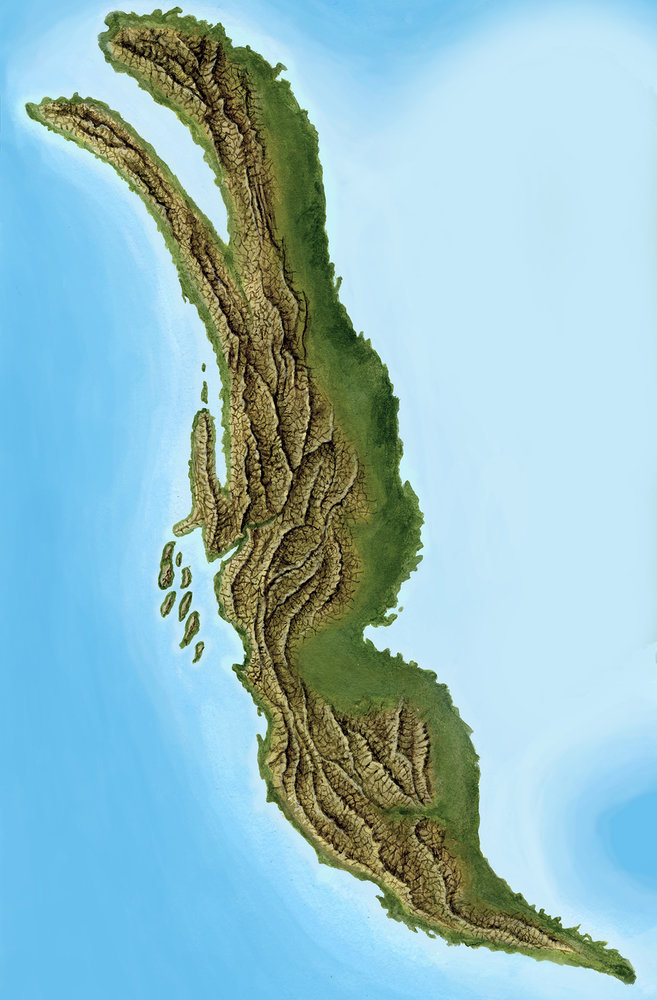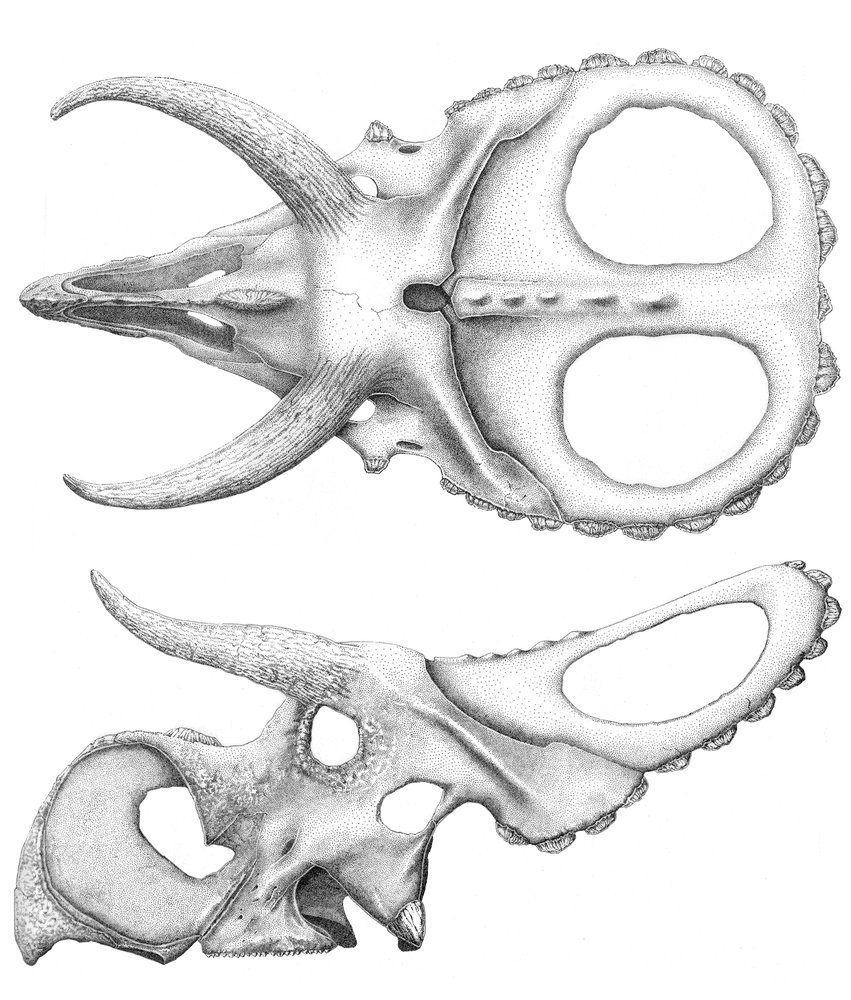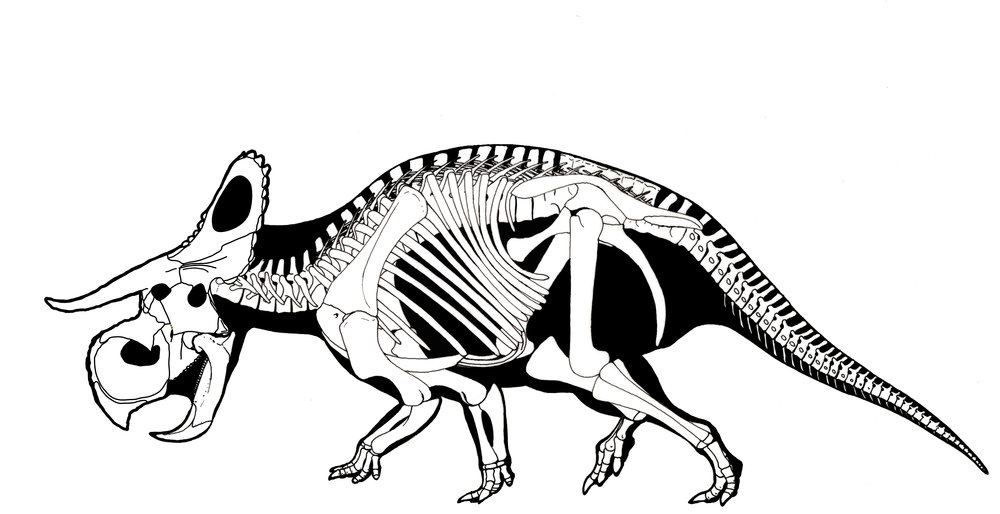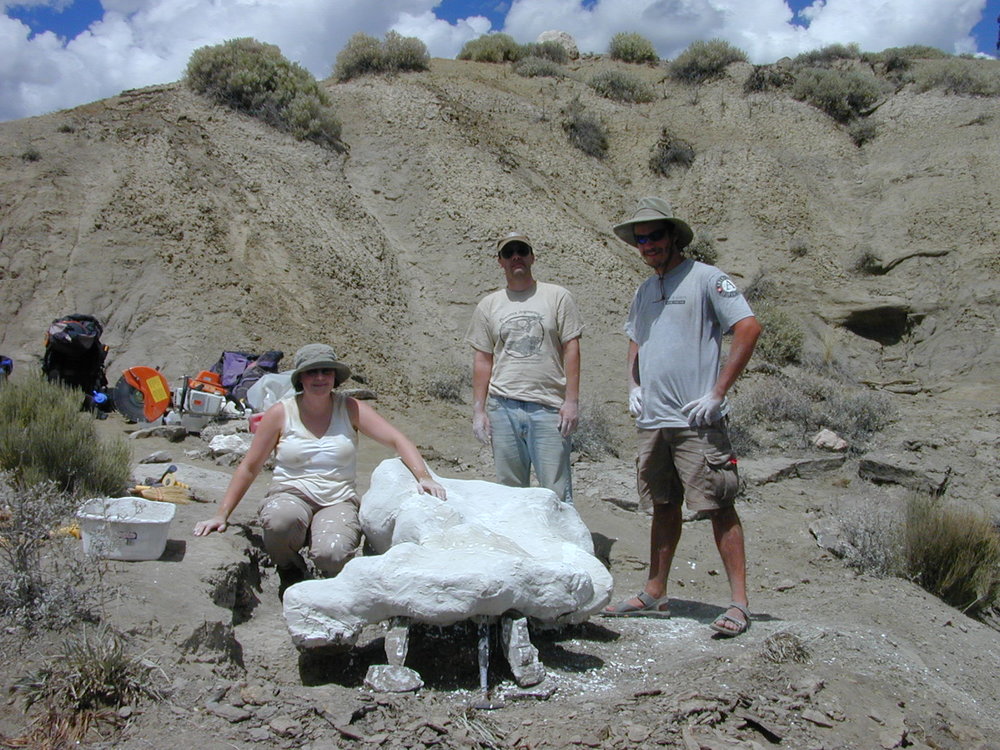Longhorn of dinosaurs

In 2013, Mark Loewen and his colleagues unearthed a new species of dinosaur, dubbed Nasutoceratops titusi.
Badlands

The ancient beast was unearthed in the badlands of the Grand Staircase Escalante National Monument in Utah.
Laramidia

The animal lived 76 million years ago on a continent called Laramidia. At the time, North America was split in two and the long, skinny continent of Laramidia became a hotspot for dinosaur diversity.
Leafy environment

Though the area is a barren desert now, during the late Cretaceous period, when Nasutoceratops lived, the area was a swampy, forested region similar to the Mississippi Delta.
Wide nose, long horns

Nasutoceratops, which translates to big-nosed horned face, sported a wide, flaring snout and absurdly long horns.
No frills

Yet the frill around its head was rather simple and unornamented. The beast likely used its horns much as elk and deer do today: to ward off predators, to fight sexual rivals and to attract mates.
Mega-herbivores

Nasutoceratops was roughly 16 feet long (5 meters), and is part of the ceratopsid group of dinosaurs that includes Triceratops. Large ceratopsids emerged from smaller, house-cat sized animals.
Get the world’s most fascinating discoveries delivered straight to your inbox.
Rare discovery

The team (Eric Lund shown here) excavated the dinosaur several years ago and have been painstakingly reconstructing it for years.
Excavating the beast

The team unearthed most of one skull and a few pieces of the body, as well as fragments of another skull. Because they don't have the body, they can't say whether the horns on the dinosaur differ between males and females.

Tia is the editor-in-chief (premium) and was formerly managing editor and senior writer for Live Science. Her work has appeared in Scientific American, Wired.com, Science News and other outlets. She holds a master's degree in bioengineering from the University of Washington, a graduate certificate in science writing from UC Santa Cruz and a bachelor's degree in mechanical engineering from the University of Texas at Austin. Tia was part of a team at the Milwaukee Journal Sentinel that published the Empty Cradles series on preterm births, which won multiple awards, including the 2012 Casey Medal for Meritorious Journalism.
 Live Science Plus
Live Science Plus





